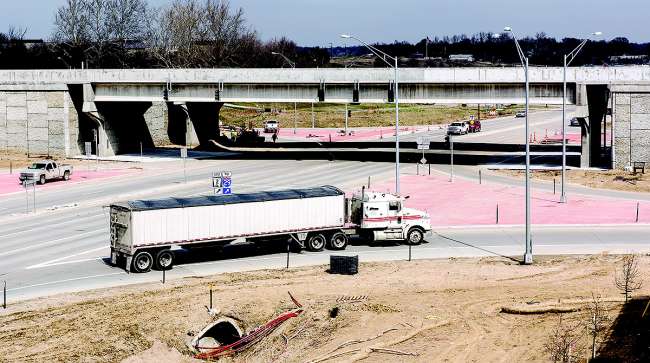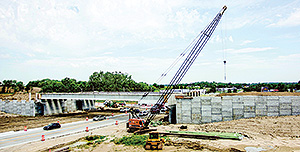Staff Reporter
Nebraska Construction Program Focuses on Freight Movement, Flood Recovery

[Stay on top of transportation news: Get TTNews in your inbox.]
The Nebraska Department of Transportation recently released its 2020 construction program, which includes plans for long-awaited improvements on major routes.
Unveiled Sept. 10, the initiative outlines transportation projects that have been scheduled to receive funding over the next year and identifies projects that have been planned for construction over the next five years.

Nebraska DOT
Three major projects listed in the program include the Lincoln South Beltway, the Fremont Southeast Beltway and U.S. Route 83, corridors that are important for freight movement.
The U.S. 83 project proposes improving mobility on a 9.7-mile stretch of the route in southwestern Nebraska with the Super 2 approach, which involves adding passing lanes adjacent to the existing lanes of traffic about every 5 miles. NDOT spokeswoman Vicki Kramer said this project will build on existing Super 2 work NDOT has conducted on U.S. 83.
“It’s a key north-south route through the middle of the state where we don’t really have any major interstates,” Kramer said. “This kind of serves as that key route.”
The Fremont Southeast Beltway project is a divided highway, approximately 4 miles long, that is meant to alleviate congestion in the residential and downtown areas of Fremont, an area 40 miles west of Omaha, Kramer said. The area is frequented by trucks that are accessing nearby railroads.
The 2020 Construction Program is now available! The Program Book details transportation projects scheduled for funding over the next year and identifies those planned for construction the following five years. More information: https://t.co/x8ejXKLSv7 pic.twitter.com/qhFPNetLOh — Nebraska DOT (@NebraskaDOT) September 10, 2019
The Lincoln South Beltway would link state Route 2 to U.S. Route 77 with an 11-mile connector route outside downtown Lincoln, so that vehicles seeking U.S. 77 would not need to weave through the city to reach it. Lincoln is about 60 miles southwest of Omaha and within 65 miles of both Kansas and Iowa.
The Lincoln South Beltway, which has been on Nebraska’s radar for decades, is one of the largest projects NDOT has tackled, with a price tag of $300 million. Kramer said the project will serve as a useful conduit for trucks moving through the area to reach Kansas City, Wyoming, Colorado and South Dakota.
“This allows traffic to detour and go around Lincoln, so it takes the main freight traffic out of town and puts them on a beltway so they’re not stop-go, stop-go,” Kramer said. “It’s huge for us.”
Spring 2019 by Transport Topics on Scribd
All three major projects were aided by the Build Nebraska Act of 2011, which repurposes a portion of the state sales tax to create $1.2 billion over 20 years for infrastructure projects, and the Transportation Innovation Act of 2016, which allocated $450 million for infrastructure investment.
According to an NDOT press release, the agency’s construction strategy for 2020 has been slightly altered to address infrastructure needs resulting from the historic flooding the state experienced this year.
NDOT’s Surface Transportation Program Book differs from previous years because it categorizes asset preservation and capital improvement efforts into two categories: projects that fall in the 2020 construction program or stand-by projects. Standby projects are those that NDOT cannot fully commit for letting in 2020. As the department gains a better idea of funding and delivery schedule, it will update the 2020 construction program list with projects from the standby list.
WANT MORE NEWS? Listen to today's Daily Briefing
“The department’s 2020 program book looks a bit different from what communities and the construction industry are used to,” NDOT Director Kyle Schneweis said in the press release. “The program, which is essentially a statewide list of asset preservation and capital improvement projects, will be a living document, housed on our website and updated periodically.”
NDOT’s program encompasses a record $782 million, including $153 million in emergency expenses. The Federal Highway Administration announced Sept. 10 that it has allocated $68 million in emergency relief funds to Nebraska to help rebuild roads and bridges that were damaged by the heavy rains that drenched the Midwest this past winter and spring. FHWA issued $25 million in “quick release” funds to Nebraska in April to repair infrastructure that had been affected by the severe flooding.




